Natalie and I were not hitting it off. In fact, I had become convinced she was trying to kill me.
I’m a non-confrontational person, and I don’t like it when someone’s not my friend. But in this case, our rocky relationship was especially alarming: Natalie was an 1200-pound quarter horse, and I was on her back. Precariously, I might add.
As we trotted up a steep mountain slope, another horse and rider pulled alongside us. Natalie’s ears flattened and her back leg shot out, blasting the other horse with a nasty kick. She quickly lunged to bite. The other rider pulled away but Natalie continued to spin in rage.
She settled, and as we again began picking our way up the slope, I could again take in what rancher Glenn Elzinga was trying to accomplish here on this rugged Central Idaho range. He shared this country with wolves, imperiled species like bull trout and sage grouse and sensitive habitats.
Glenn had long believed that cattle ranching could have a more positive impact on the land and wildlife around us. And to do this, he’s now incorporating ancient herding techniques, practicing what he calls “one of humanity’s oldest professions.”
But that doesn’t mean it’s easy. Up ahead of me and Natalie, Glenn’s voice boomed across the mountain. “We are dealing with rugged terrain and a lot of variables here,” he said. “You are working with horses and cattle and wolves and all these other creatures, and they often have their own agendas.”
He looked at me. “You can see how that could be difficult, out here in country like this.”
I looked down at Natalie, the one animal whose agenda I had to deal with at the moment. Yeah, I could see the challenge here. Could I ever.
Making a Home on the Range
I first met Glenn Elzinga at a Boise farmers market in the early 2000s. Tall, dressed in denim, with a bushy mustache, he stood out in the crowd. In addition to selling excellent grass-fed beef raised on his Alderspring Ranch, he was a natural storyteller and had a keen wit. I liked to stop by his booth and hear his ideas on ranching.
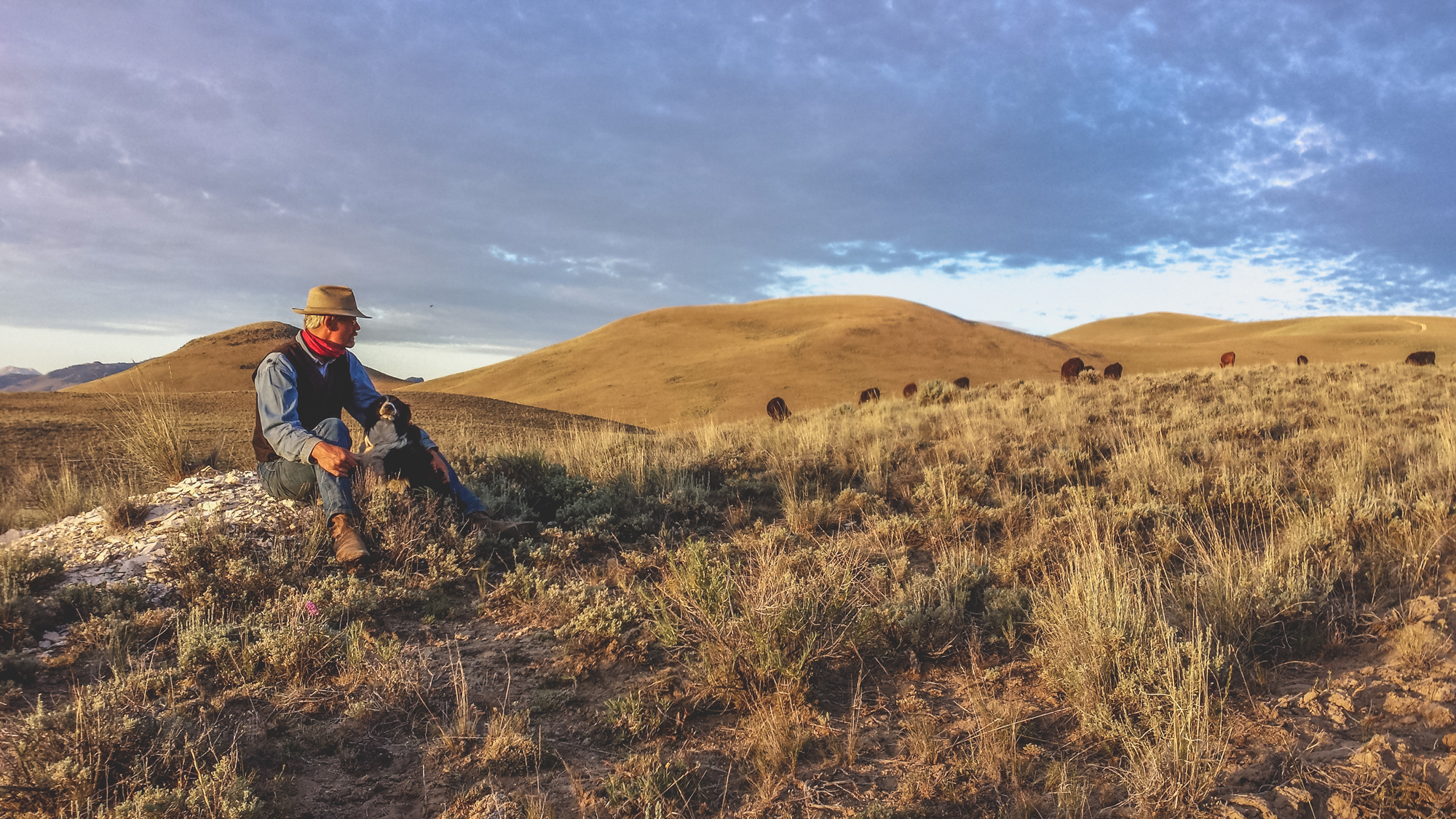
A few years later, he worked with The Nature Conservancy to purchase a ranch in Central Idaho’s Pahsimeroi Valley. I was director of communications for the Conservancy in Idaho at the time, so I learned more of his story. Glenn and his wife Caryl both had careers in natural resources but wanted to spend more time with their seven daughters. They had a vision for ranching, serving as good stewards of the land while also producing high-quality beef.
For years, they rented pastures but that didn’t allow them the control they wanted. The ranch they purchased, like many in the Intermountain West, included public grazing allotments. They were entitled to graze their animals on a defined area of public lands. Ranchers typically turn their cattle loose on these lands in the early summer, and then rounded them up in the fall.
Glenn believed that by producing organic, grass-fed beef, he could ranch sustainably and produce a better product. His Alderspring Ranch beef began earning acclaim from top chefs and winning taste tests. When food journalist Mark Schatzker searched for the perfect cut of beef – documented in his book Steak – his quest ended at Alderspring Ranch.
But that wasn’t enough for Glenn. Always curious, he wanted to find better ways to ranch on public lands.
I had written a lot about the Elzingas during my time with the Conservancy’s Idaho Chapter, but I hadn’t seen them for several years. When Glenn invited me to take a horseback tour of his public lands allotment and discuss a new technique he was employing, I was intrigued. The trip sounded even better when I learned that two of my favorite Nature Conservancy colleagues, Dayna Gross and Mark Davidson, would be joining.
“It will be an adventure,” Dayna promised.
She did not lie.
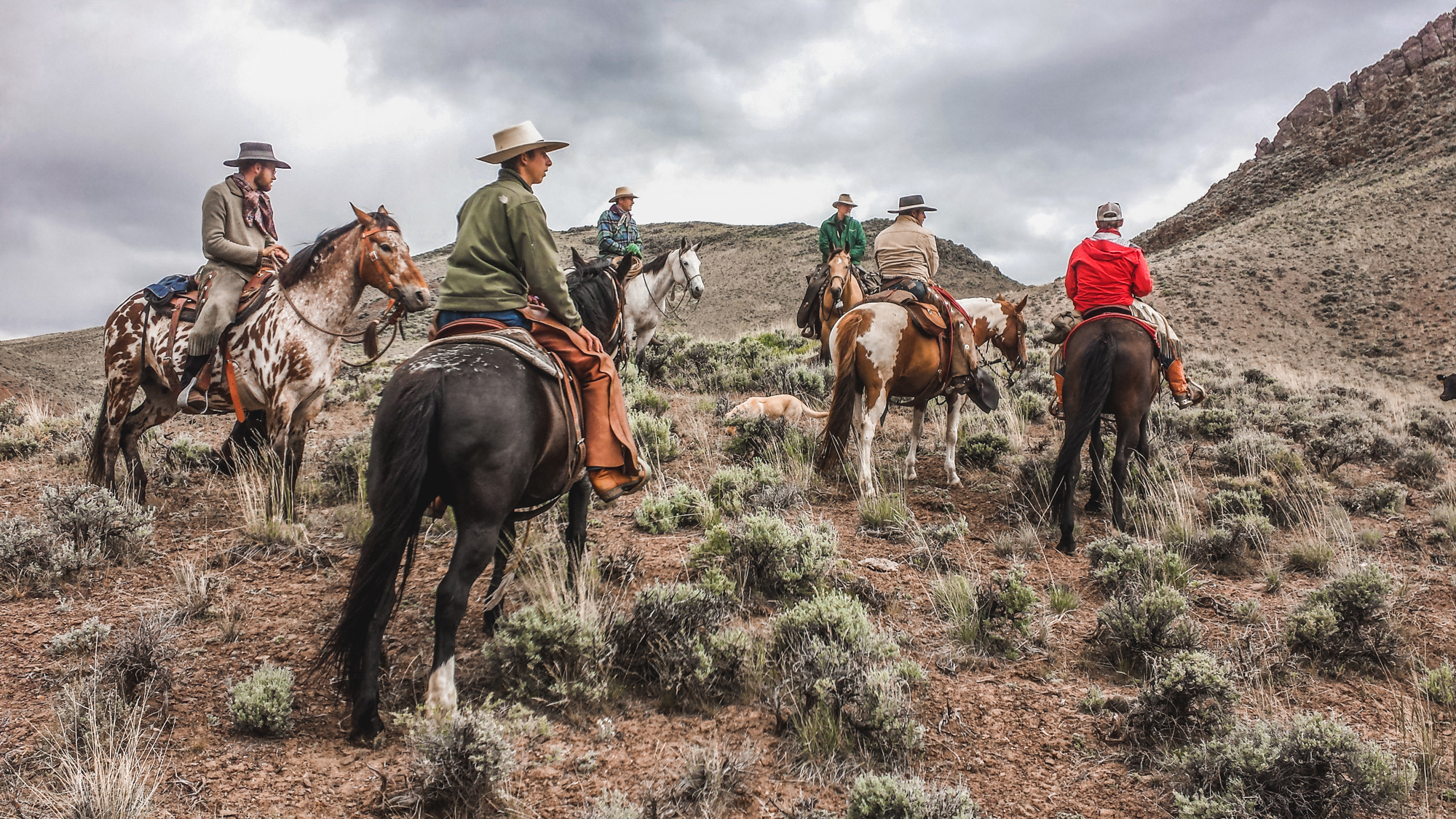
A Long Day Ahead
I started to have my misgivings early the morning of the tour. We would be joined by state and federal land management staff, who were also interested in Glenn’s grazing techniques. As they spilled out of their trucks, I noted they all donned well-worn chaps. They hoisted saddles and reins with the easy calm of experienced riders.
I tried to calm my growing sense of unease, but the increasing rain and wind weren’t helping.
Glenn led me to Natalie. “She’s really calmed down in the past few weeks,” he said. “She’ll be fine.”
There were 17 horses and riders on the trail, and soon we headed up the mountain. We quickly fell into line along a well-worn trail, but a half hour later veered off, heading down a steep slope criss-crossed with fallen timber. Natalie began shaking her head. “Watch out for sharp branches,” Glenn called out. “It really freaks the horses out. And you don’t want a blow up in this stuff.”
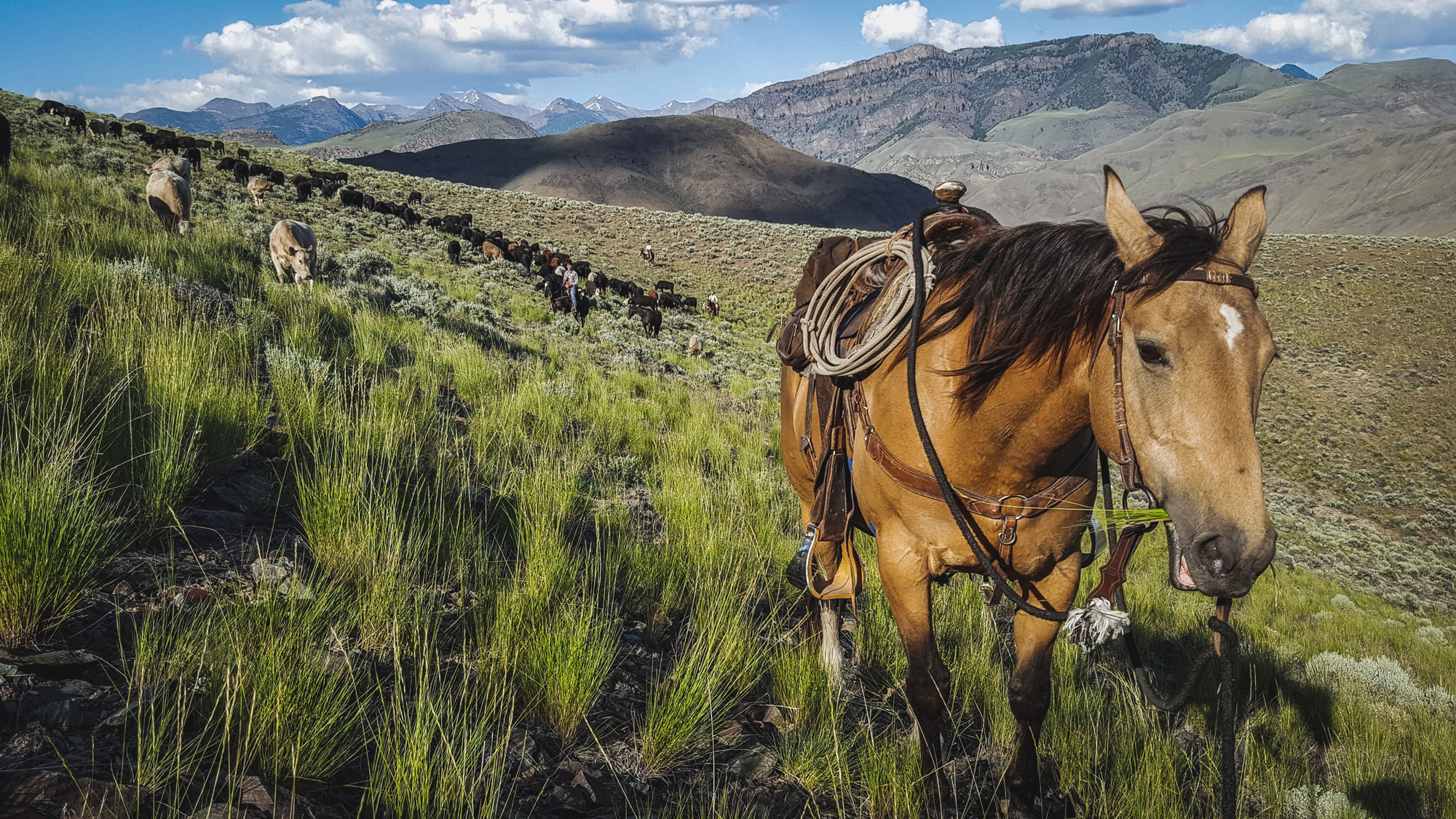
I definitely did not. I rode on, my anxiety blossoming into full-blown panic. And then we emerged into an open meadow. I breathed. I could do this.
Glenn’s daughter Melanie rode up alongside him. “Where to next, Dad?” she asked.
He pointed to a peak in the distance. My eyes tracked all that was between us and the destination: more steep slopes, more fallen timber, much of it far more gnarly than what we had just traversed.
I looked over at Dayna, desperately seeking an encouraging word.
“It’s going to be a long day,” she said.
More true words from my friend.
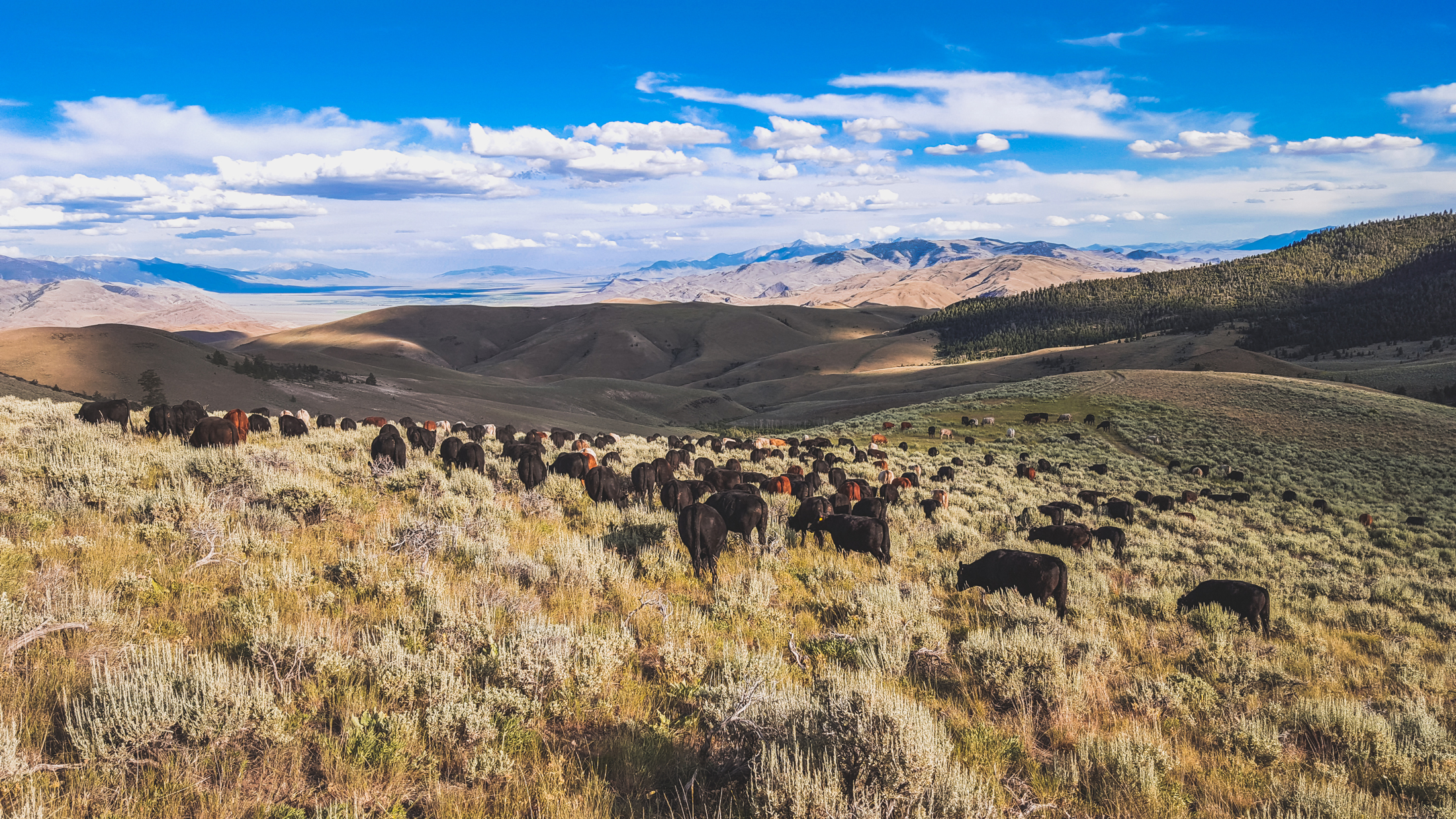
When the Big Dogs Come Calling
Glenn’s no stranger to long days, and his involve much bigger challenges than an unruly horse. It was one of those challenges that led him to adopt the new ranching practice.
As he bought groceries at the local store, a neighboring rancher approached him. “Your cattle are headed right towards a den of big dogs,” he said.
“Big dogs” is the local term for wolves. Glenn had already lost $20,000 worth of cattle to wolves, so the rancher’s pronouncement alarmed him. He checked with the local Idaho Department of Fish and Game office. The rancher was right: there was a radio-collared pack of wolves, and in a few days they would be meeting his cows. These meetings never end well.
“You’re within your right to have those wolves killed,” the agency staff person said.
And Glenn knew that was true: wolves were routinely killed for livestock conflicts. “I actually like wolves as an animal,” he said. “Wolves are here. They’re not going away. I thought there had to be a way to deal with this without confrontation.”
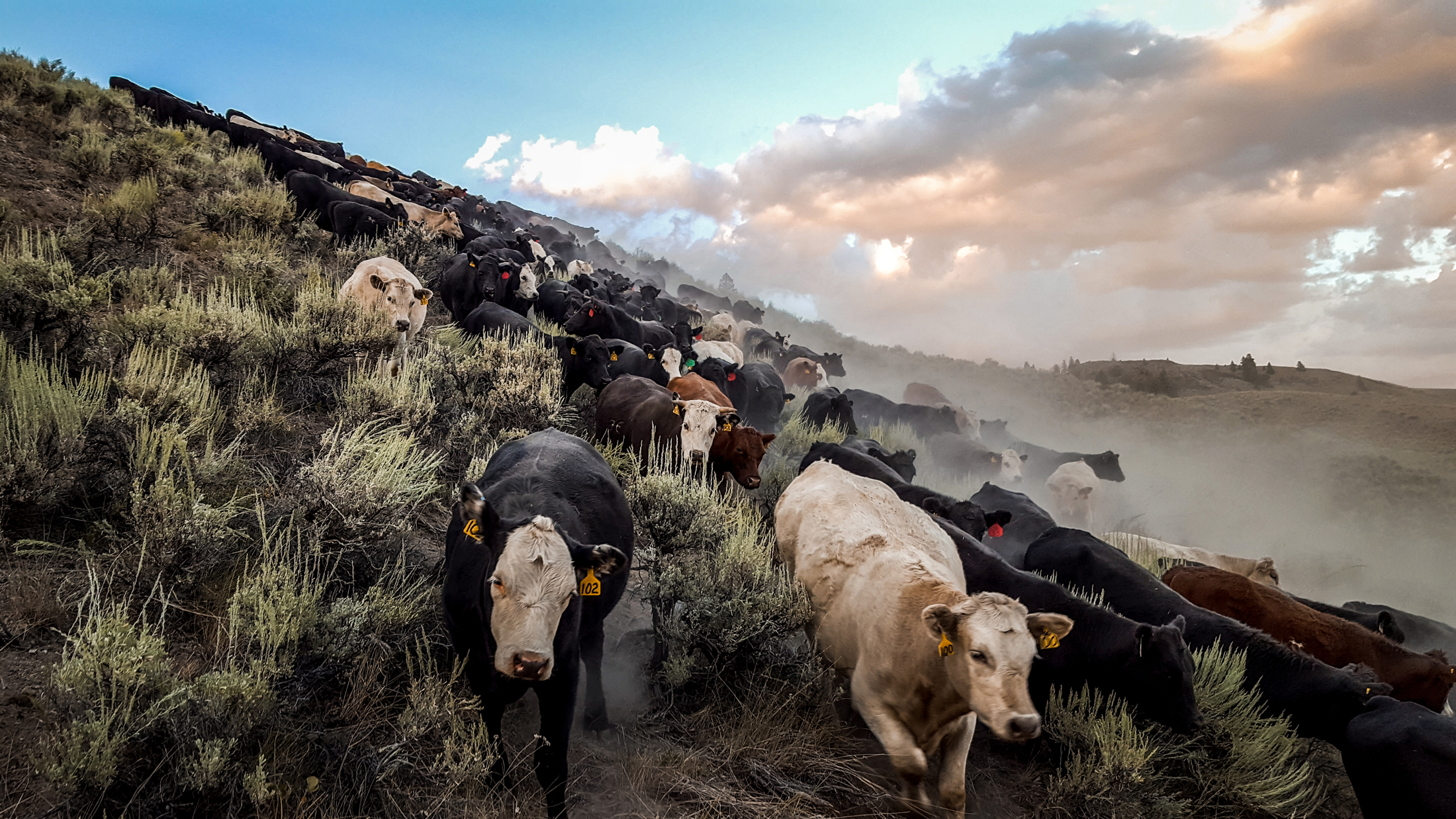
He moved his cattle off the public range and back to his private ranch, far from the predators. That was a short-term fix. “We were scratching our heads, trying to find a way that was proactive rather than reactive,” he said.
Months later, he was Christmas caroling at the home of an elderly rancher who collected Western memorabilia and art. Glenn looked at the wall and his eye caught a Charles M. Russell painting.
“There were cowboys on the range with a thousand head of cattle behind them,” he said. “This was in the days before barbed wire. These guys lived with their cattle. There were rustlers and grizzlies and wolves. They needed to protect the cattle and move them to the best grass they could find.”
Glenn couldn’t get that image out of his mind. They protected the cattle by staying with them.
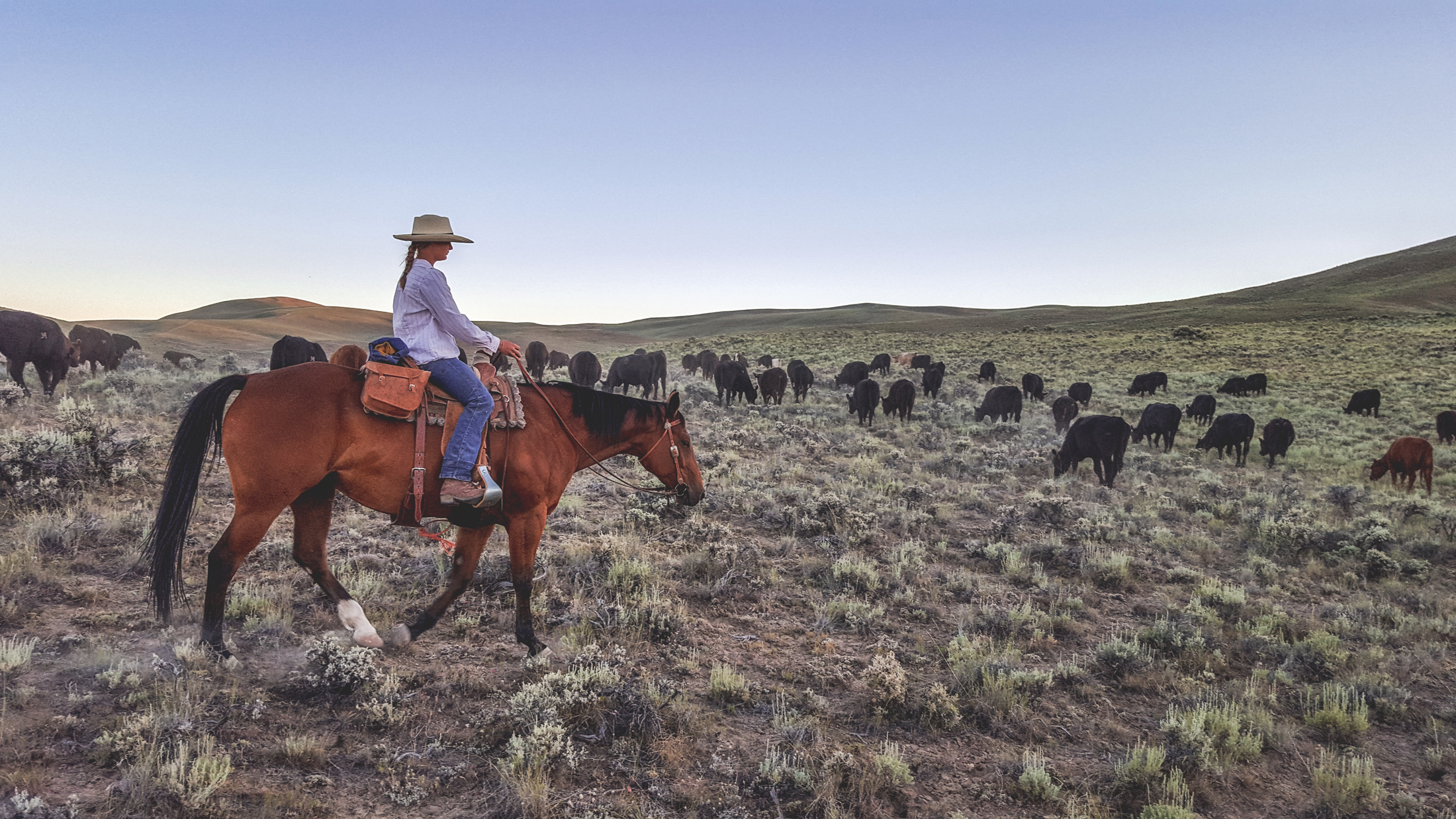
“Why couldn’t we do the same thing?” he thought. “We could stay with the cattle and move them where we want to go. We could add in ecological objectives so that we could keep cattle out of sensitive habitat, and graze on the best quality grass.”
Herding this way is one of humanity’s oldest professions, and is still practiced by herding cultures from the Masai in East Africa to Mongolian herders on the Asian steppe.
But for a century or more in the American West, ranchers have turned their cattle loose on public lands allotments. “The cattle go downhill to water, and stay in the riparian areas,” he says. “The ranching becomes reactive. The goal is to keep them out of areas. Keep them out of sage grouse habitat, keep them out of creeks. You herd them out, and they would move back down at night.”
With 70 square miles to patrol, including 50 miles of creeks, finding all the cattle proved an impossible task.
Glenn’s plan was to herd the cattle where he wanted them to go, what he calls in-herding. They could plan the herding around ecological objectives. His allotments are home to sensitive species like sage grouse, bull trout, chinook salmon and steelhead. Aspen groves and streams have been hammered by generations of grazing.
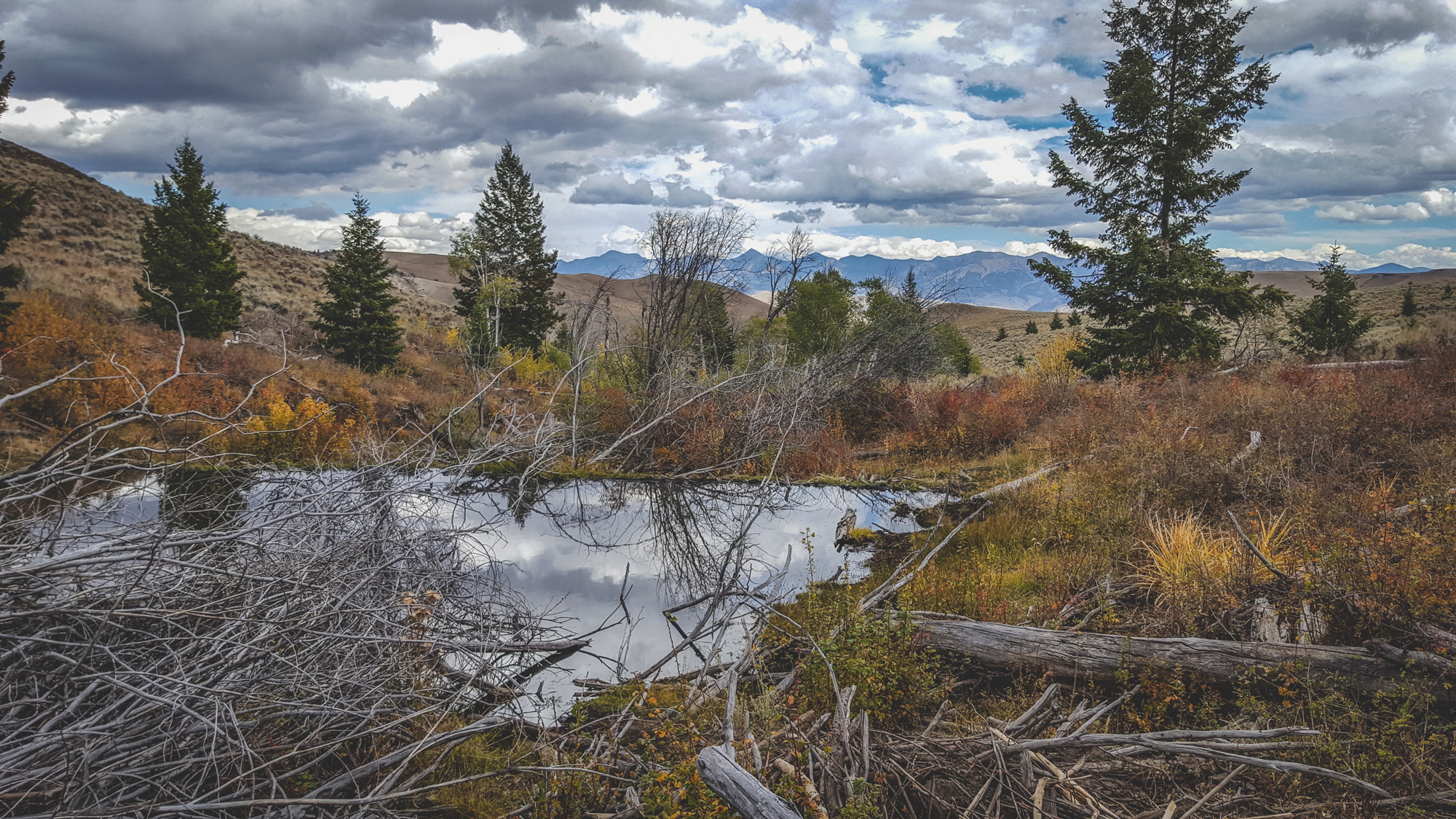
“It’s really such a simple idea,” he said. “We’re going to be with the cows and direct them where to go rather than just let them loose and let them go where they want.”
It is simple, but he had to figure in the complexities of cattle, horses, wolves, endangered species and terrain. And people.
“Really, you have all these factors out here and the toughest of all to manage is people,” he said. “You need someone who has strong horsemanship and can move cattle. But they also have to buy into the ecological goals. That’s the hardest to find.”
An ecologically minded herder has to know vegetation and weeds. They have to know how wolves behave. They have to know what a healthy aspen grove looks like.
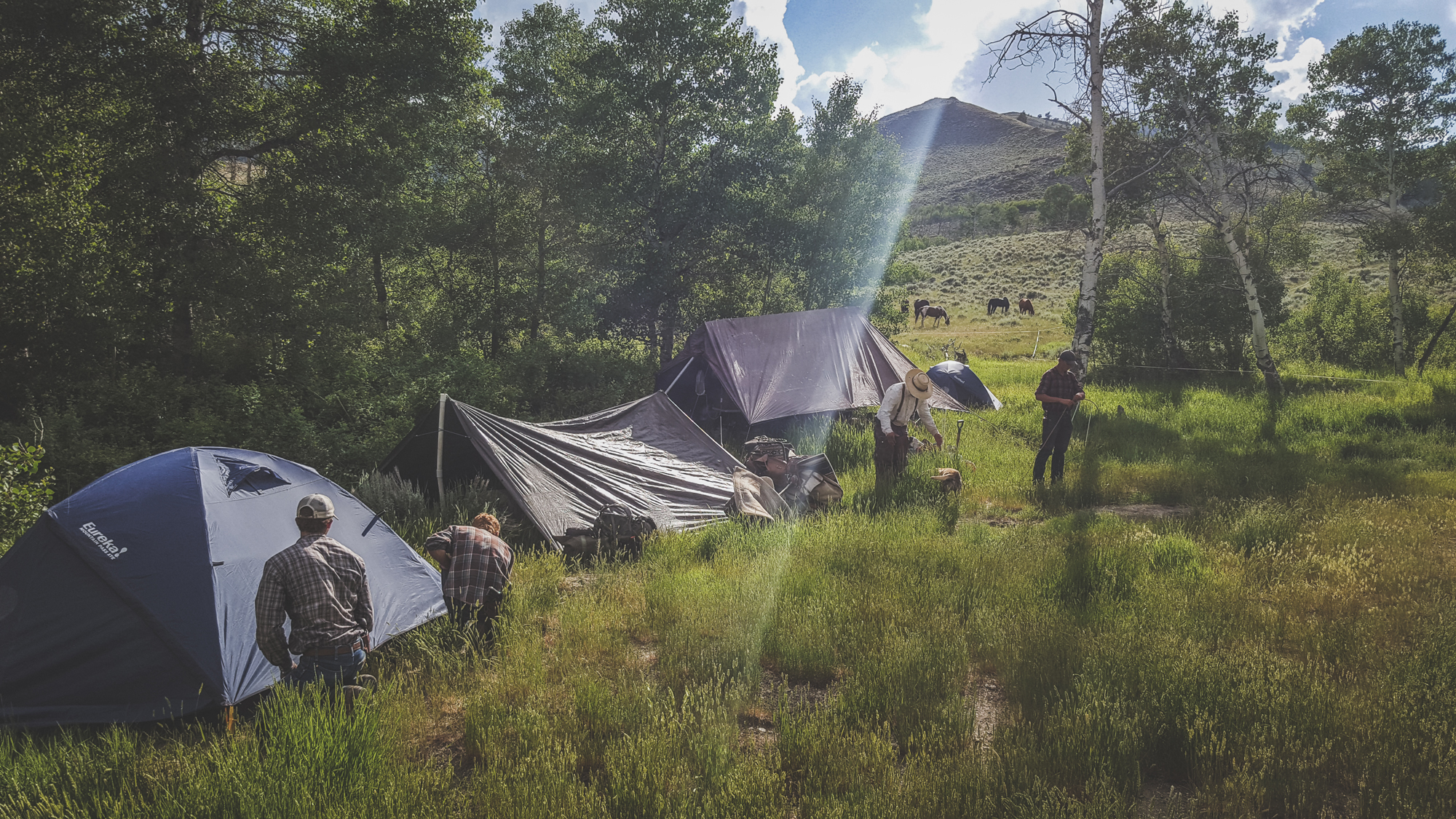
“The team dynamic is so important,” he says. “If someone on the team hasn’t embraced all aspects of herding, it affects that dynamic. Things start blowing up. Out here, you really do not want things to blow up.”
Into the Woods
A friend of mine on another backcountry horse trip once advised me that the best thing to do is “trust your horse.” After a half day in the saddle, I didn’t trust Natalie. And we had just entered the gnarliest slope of the trip, filled with fallen trees, boulders, impenetrable brush and marshy creek bottoms.
Through the thick cover, I couldn’t see most of the horses. The participants called back and forth to each other, directing us to the best routes. I could hear anxiety even among the experienced riders.
“Glenn,” one of them called out. “If this is where you take your friends, where do you take your enemies?”
Natalie picked her way down the slope towards a creek bed below. “When she gets to the creek, she’s going to jump,” Glenn’s daughter Melanie warned.
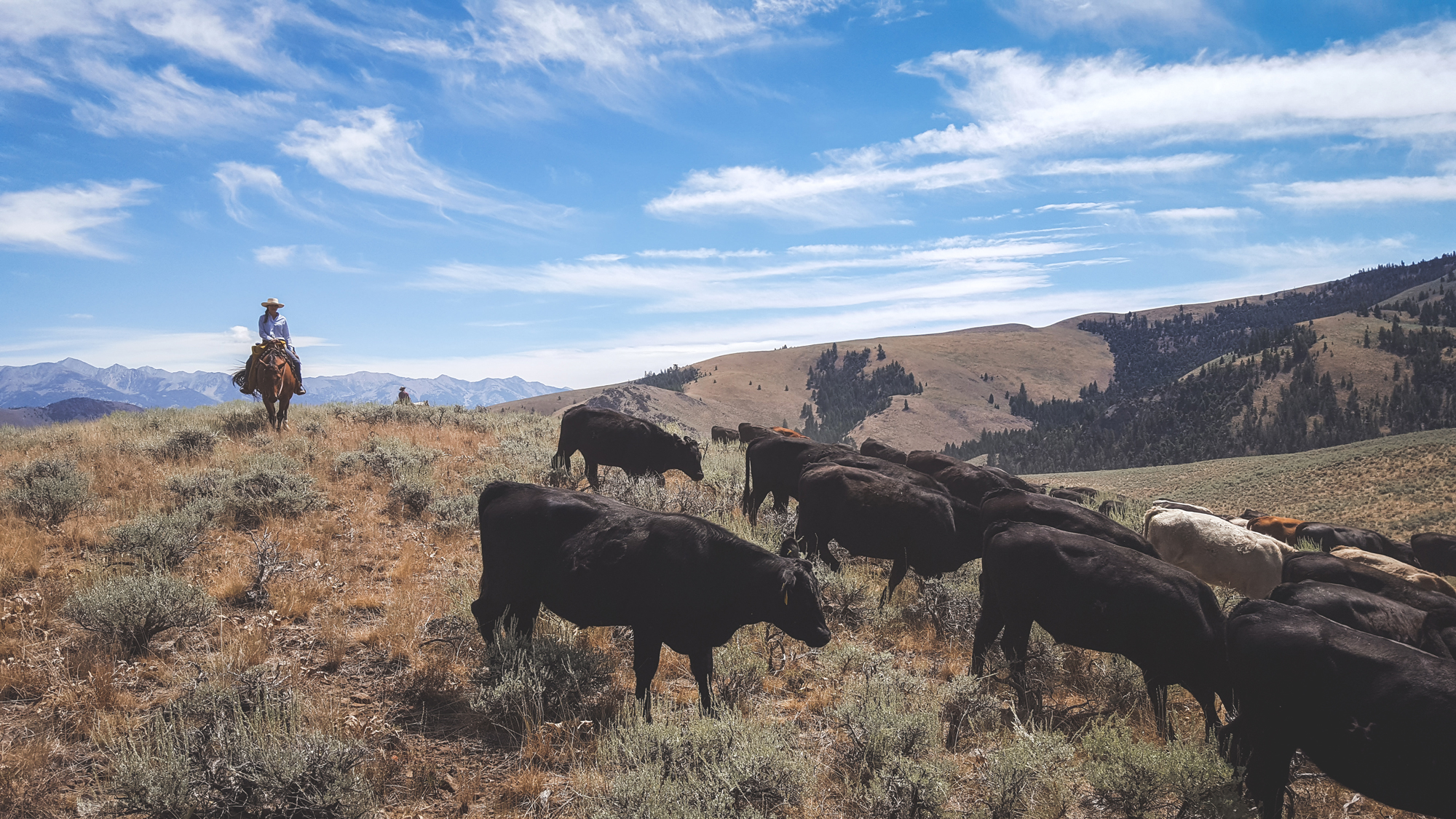
I hopped off. I did not want to be on a jumping Natalie, especially in this forest filled with objects that could impale me.
“Of course, with you on the ground, she’s now going to jump on top of you,” Melanie followed.
Faced with Sophie’s choice, I chose option C: Part ways with Natalie. I let go the reins and Natalie promptly bolted, disappearing from sight. I accepted the long, cold, wet, lonely hike out of the wilderness with joy. At least I would not be atop that mare.
I picked my way through the brush and emerged onto another mountain slope. I began climbing up to the top. Suddenly Glenn appeared on the horizon.
“Matt, don’t worry, we caught Natalie and she’s up here waiting for you,” he called.
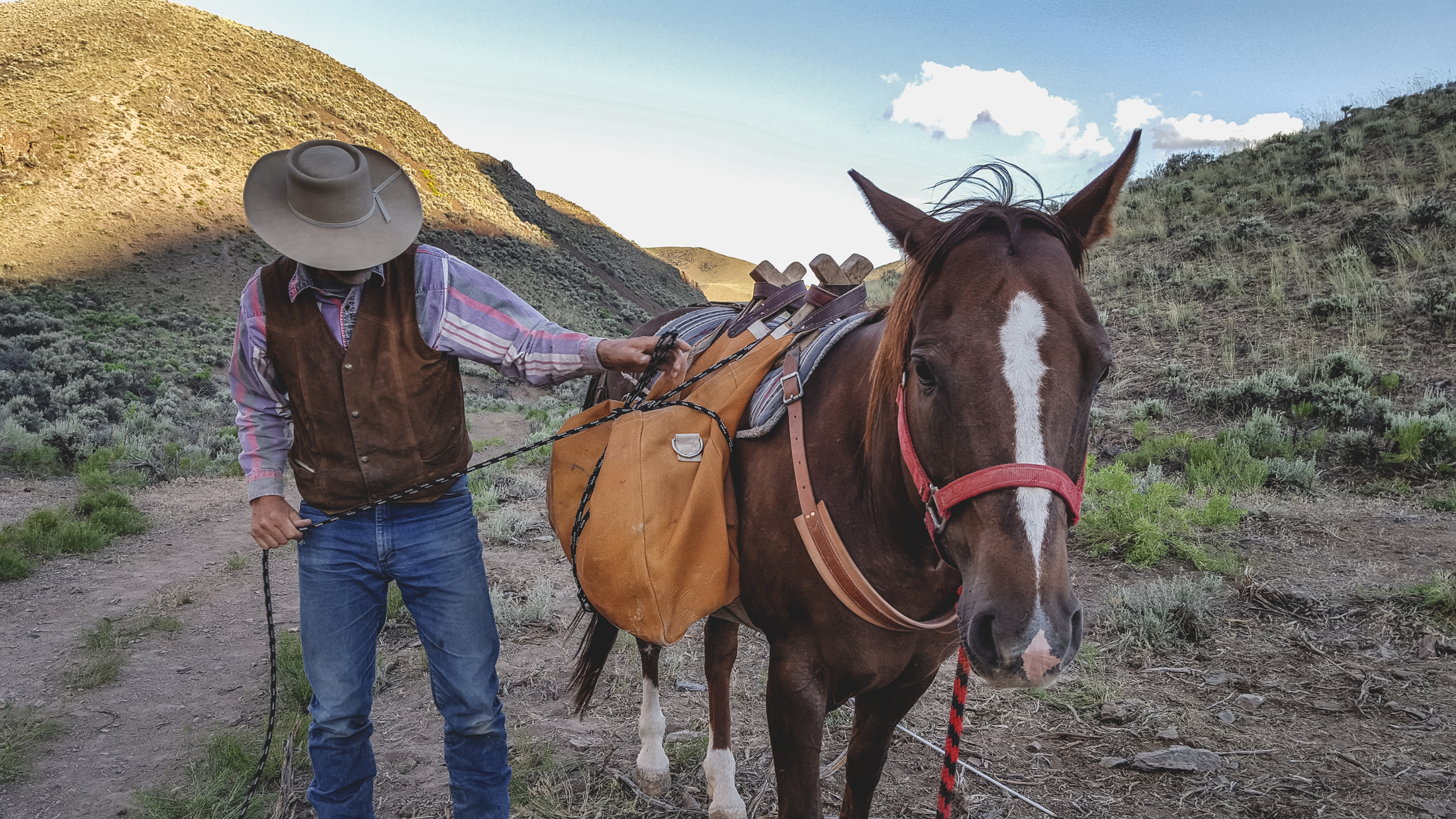
I gave a half-hearted wave. “I was afraid you were going to say that.”
The Smartest Animals on the Range
The Elzingas have now completed their second season of in-herding. They practice what Glenn calls “meal planning” – developing a plan that keeps moving cattle towards the best rangeland.
“We aren’t pushing cattle with whips,” he said. “We want to have the cattle want to go where we need them to go.”
Even in this short time, Glenn sees the results, which is why he arranged this tour (although admittedly I have missed many of the highlights).
“Cattle were using the riparian areas extensively,” he said. “Now they are completely unused, unless there is an ecological reason for cattle to be there. I show pictures of riparian sites before and after in-herding, and people in the audience question whether it’s really the same place.”
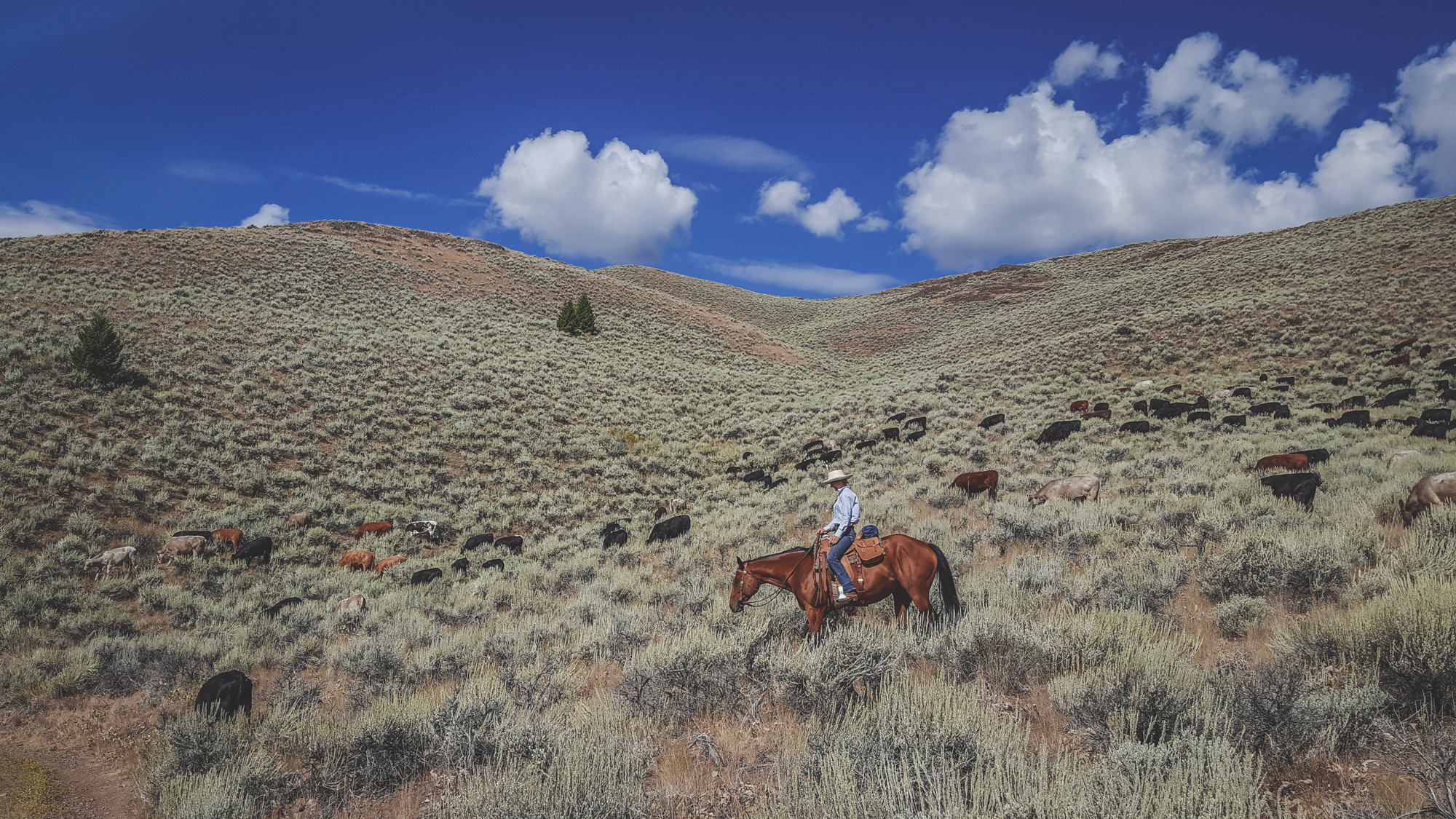
And wolves? The big predators were, after all, what started this project. “We have no problems with wolves,” he said. “We have heard howling, but we have not lost an animal.”
“The biggest deterrent to wolves is human presence,” he continued. “Wolves are the smartest animals on the range, by far. We keep the cattle with us every night in small, temporary, hot-wire enclosures so they don’t wander off. And we’re with them. Wolves don’t want to be around us.”
Glenn continues to refine his techniques, reading, observing, talking to professionals from a variety of backgrounds. “I have always wanted to fuse ranching and science,” he said. “There’s a lot of science we can integrate into our management. We want to proactively wield tools that enhance ecological conditions.”
Just Another Day in Central Idaho
Back on Natalie’s back, I resolved to be more assertive with my horse. This resolve lasts at least five minutes, when she lunged and viciously bit a nearby horse. Then charged.
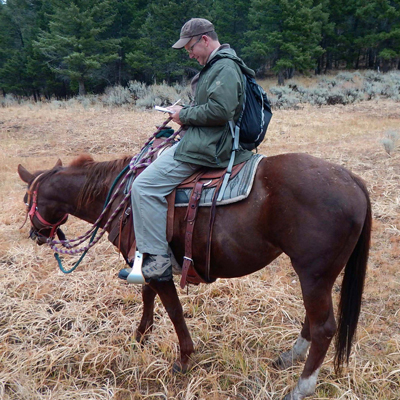
I felt like a meek substitute teacher trying to play nice with a bully. You know how this ends: the bully torments not only the teacher, but all the classmates. The other horses on this field trip now suffered Natalie’s wrath.
I tried to warn other riders away but Natalie began seeking out opportunities for viciousness. She lunged across a mountain meadow, and reared up to strike. Then she charged again. Glenn rode up to me. “I think it’s time,” he said. “To trade horses.”
And so I found myself on Glenn’s horse Ginger. My colleague Mark Davidson would later tell me a story of Ginger rolling down a mountain slope with Glenn on her back; I appreciated his restraint in waiting a few days to share this anecdote.
I found Ginger perfectly reasonable, but as I turned to share my relief with Dayna, I noticed she was missing. Looking ahead, I saw her horse barreling down the mountain full speed. “We have a runner!” someone cried.
It did not look like this would end well, but Glenn stopped the horse, and soon we were back on a well-worn trail, and then back to the starting point. I was sopping wet, sore and giddy. Adventure over.
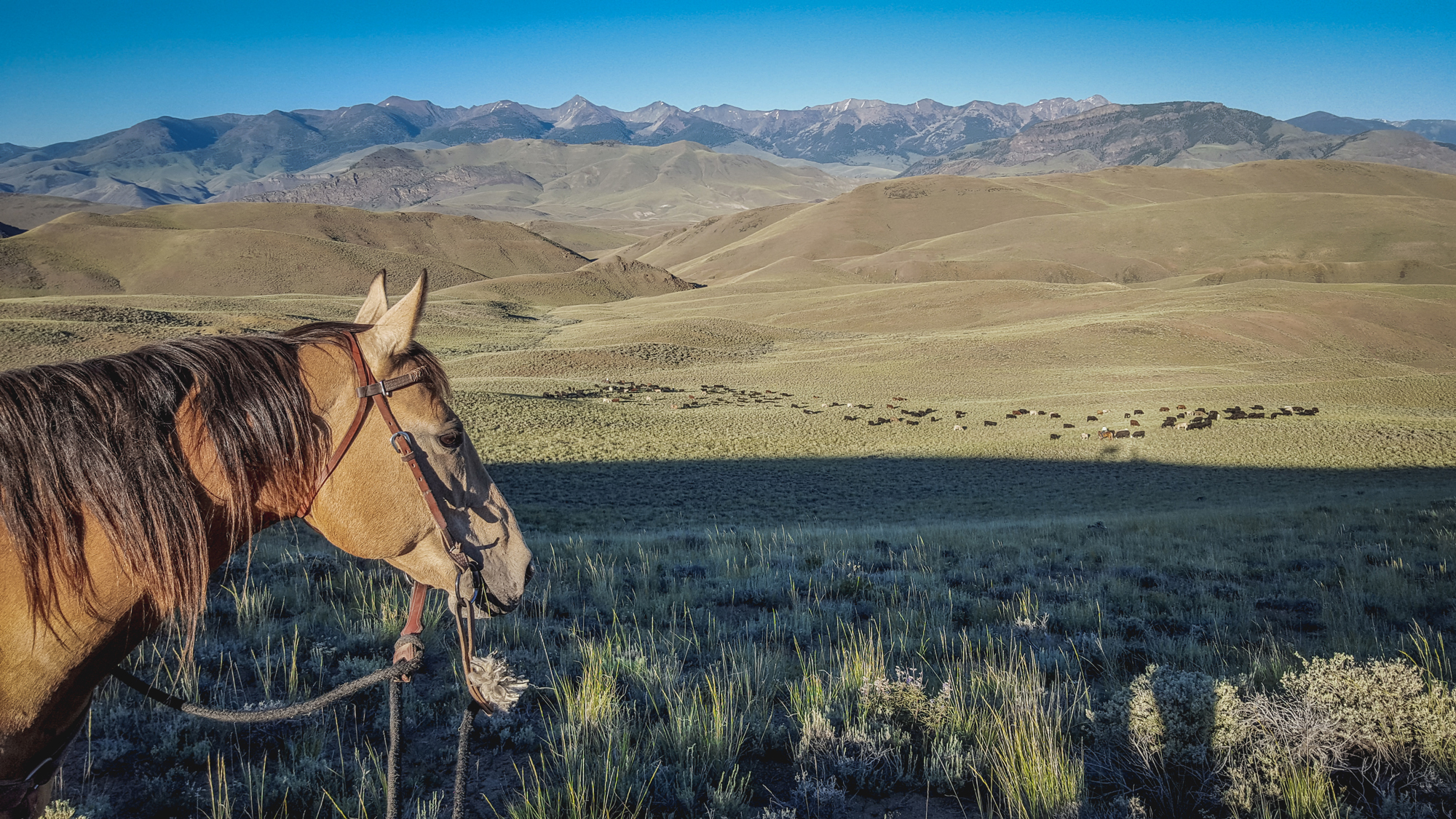
And as Dayna and I drove down the rutted road, it hit me: For Glenn, it was just another day on the range. Managing naughty horses. Managing cattle that want nothing more than to wallow in a creek filled with imperiled bull trout. Accounting for rain and lightning and snow. Watching out for wolves that want to eat cattle. Managing cowboys, some of whom may think this idea is flat-out crazy. Identifying weeds and predator sign and weather patterns. Knowing what wetlands and aspens and sage grouse habitat and upland meadows look like when they’re healthy.
Getting up and doing it all over again.
Working in conservation, I hear a lot of talk about how to scale up our efforts, how to leverage projects, how to influence land management across millions of acres or even the globe. But at some point, all that planning has to hit the ground.
And when it does, it’s work. It’s this. Here is one ranch, one grazing allotment, and it is hard, hard work with no shortage of complexity.
But it’s also where conservation gets real: where you can look out and see food being produced without tearing up the land. See a land where we can have cattle and wolves, sage grouse and flowing streams.
I was glad ranchers like the Elzingas were up to the task, shaping a new way of public lands ranching. And even gladder to be off Natalie’s back.
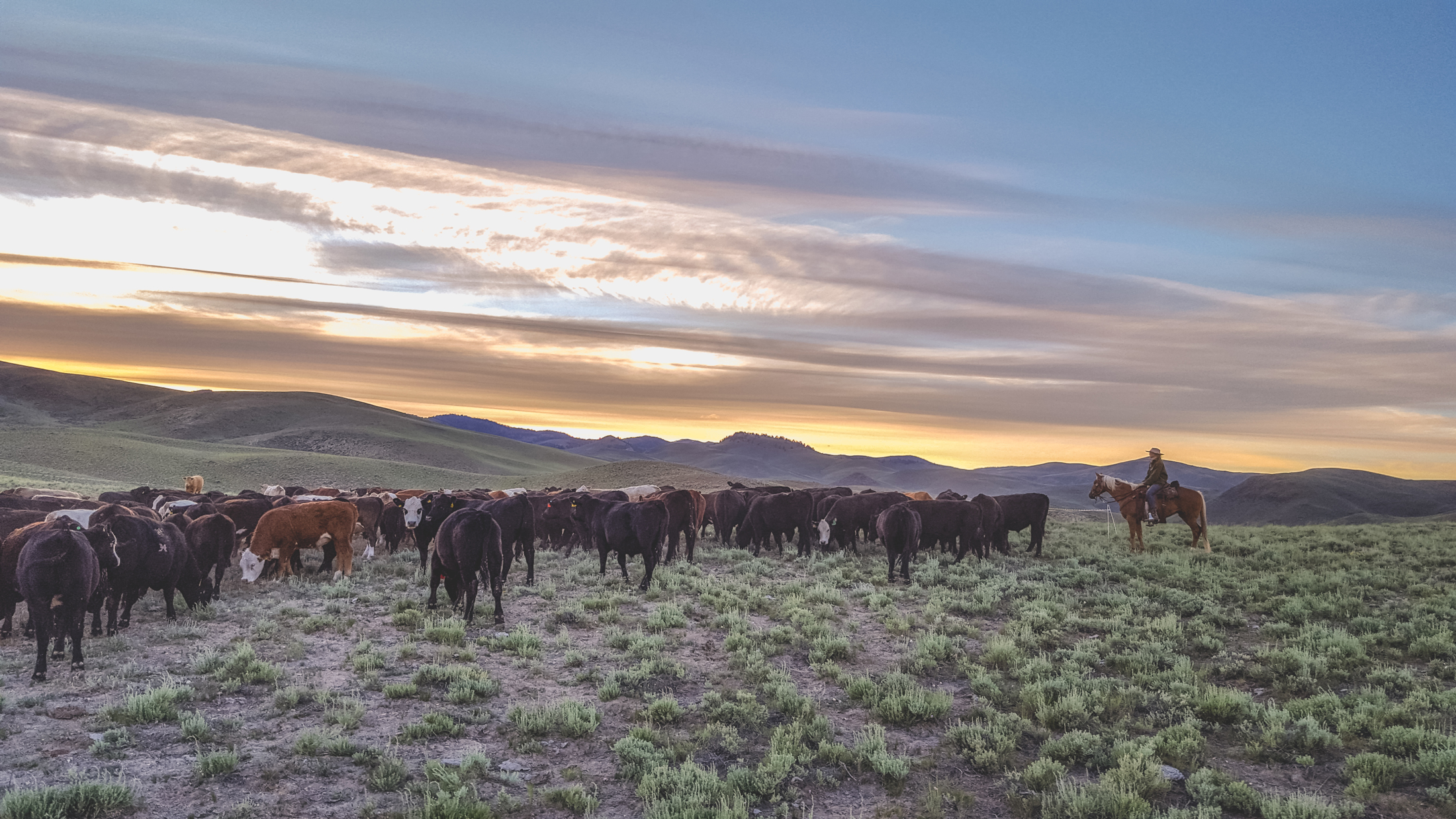
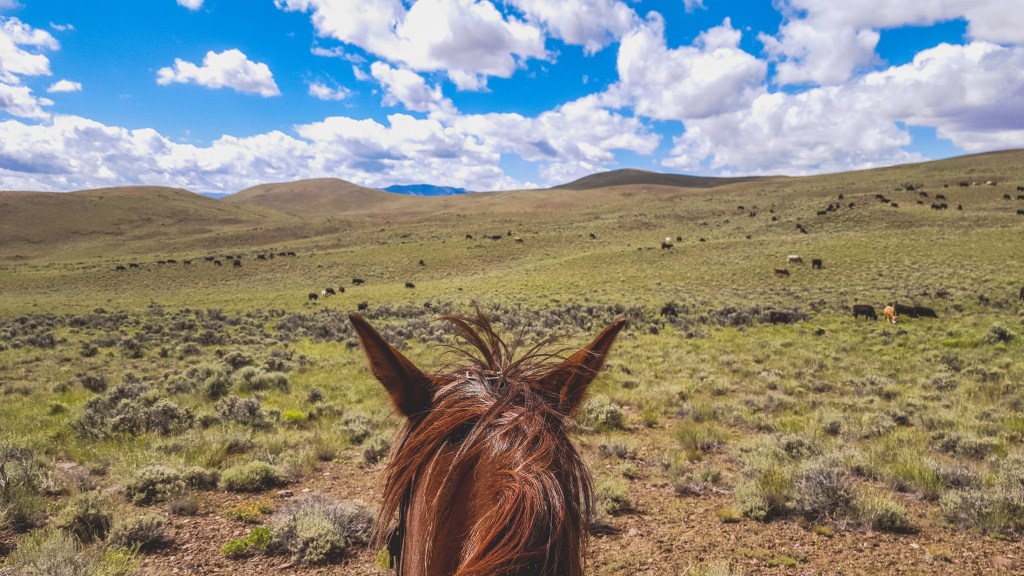



Thank you so much, Matt!!! My greatest dream has been to have all our co-lives lived in the harmony that enriches us — not kills us. I’m SO grateful for your insights and passions, and I’m sure all the other animals will be, too. IT’S TIME!!!!!
It’s wonderful to see a dedicated, enlightened approach that the Elzingas have committed to…this planet needs more rancher/environmentalists like them…!!!
There are a lot of cowboys/gals of all ages, out there who would love a job like full time herding cows. The trick would be connecting with them and finding convincing ways to educate and inspire them to learn how to do it this way. Maybe the lifestyle would be the reward?
Hi Matt Miller…what an extraordinary article on the range and grazing and co-existing with sage grouse and wolves and cattle…I used to live in Leadore, Idaho and still go back every year to bow hunt elk with my
recurve bow and fish the streams for bull trout and cutthroat and never seeing anyone while fishing. Have
experienced many very close encounters with bears and cougars too!
You are now a range rider plus a great story —thanks Matt.
A BIG Thank You to this rancher for trying to live with the wildlife and help preserve the
Land. In this day and age where the poor wildlife pay, this very refreshing.
Scale is important and hard. The detailed management is what it takes. One ranch at a time. Great story, matt . Did you get ridiculed for your dismount?
What a terrific story, The entire time I was reading, I was working to have a visual of my good friend Dayna in a runaway, and what sort of help Mark may have been, or what sort of smirk may have been on his face. Beautiful country, and some great partnership of the Conservancy. Somehow Dayna has never shared this story with me
Wonderful story. Now I don’t see cattle ranchers as the bad guys- being
coldly against wolves!
Where are the photos of the deer, elk and pronghorn that should be all over these ranges in the Summer??
It looks to me like the native grazers have been replaced by hundreds of non-native exotic privately owned cattle.
There is a rancher in Kittitas Valley, Sam Kiser, who keeps a herder with his cows when they out on allotment. No wolf problems with a herder and better use of the ground. Great article.
I’ve known Sam all my life, born and raised Eastern Washington girl. We are also partners with the Nature Conservancy, and work closely with Dayna Gross and Mark Davidson, a terrific organization
This is a romantic puff piece. While rancher Glenn might be a bit better than the typical western cow boy tending his herd, it doesn’t mean that what he is doing is good. It’s like suggesting moving someone from addiction of heroin to alcohol is good, just because it is more socially acceptable.
It is a shame that Matt doesn’t know much about science, and particularly, the impacts of livestock production or he would not have written such a glowing report.
Remember livestock production is more than merely grazing cattle, it is the entire package. Like the dewatering of rivers to irrigate hay fields. And those hay fields are typically growing mono-cultures of exotic species like alfalfa.
It is the predator killing–and even if a rancher does not kill a predator, the mere presence of livestock negatively impacts wolves, and other large carnivores. For example, elk avoid areas being actively grazed by livestock. They are displaced in less suitable habitat. Furthermore, Glenn’s cattle are consuming grass and other plants that would otherwise sustain native species like elk. This means that the food for wolves like are diminished.
Even saying the presence of people helps to reduce wolf predation is an impact on wolves. Why should rancher Glenn’s cattle have more right to our public lands than native wolves?
It is the fences that sage grouse collide with and block migration for some wildlife like pronghorn.
It’s the West Nile Virus that is transferred by mosquitoes that grow in water troughs.
The consumption of grasses that would otherwise feed the elk or ground squirrels or even grasshoppers, are no longer there to feed all kinds of other wildlife.
It is the trampling of soil crusts that hold the soil together and enrich it with nitrogen fixed from the atmosphere. And the soil compaction that makes places heavily trampled by livestock less able to soak up water and causing more erosion.
The trampling of soil and disturbance also enhances the spread of weeds and exotic plants like cheatgrass. But if we want to glamorize the cowboy we ignore these impacts.
It is the water pollution from having cows poop all over the landscape, but particularly in water sources like streams where they water and feed, so much so, that there is not a stream in the West that has cows on it that doesn’t have E coli pollution frequently above state and federal regulations.
It is the GHG emissions, which by the way, are greater from “grass fed” beef than from CAFO farmed animals-not that CAFOS are good. But grass fed beef because grasses are less digestible than other feed like corn must reside in the rumen longer, all the time the little bacteria there are emitting more methane.
Yes it’s great to ride horses around in the mountains, but we should not forget that cattle are an exotic alien animal that are destroying and impoverishing our public lands. And we are paying for this by subsidizing the welfare ranchers out there like rancher Glenn. Too bad Matt Miller couldn’t take off his rose colored glasses for a short time and write something informative so TNC members understood the multiple and unavoidable impacts of livestock production on Nature.
Really appreciate your informative and detailed response. I hope the ranchers and Matt and people who read this article take the time to absorb what you’re saying. Thanks.
Very well said! Thank you for taking the time to make all these important points.
It’s so sad to see TNC hyping and subsidizing wanton cattle grazing damage to native vegetation sagebrush communities, watersheds and protective microbiotic crusts. Just look at the damaged soil in some of these photos. No wonder cheatgrass is on the move.
Great story! Great message! Kudos.
Fantastic piece. You needed a mule to ride 🙂